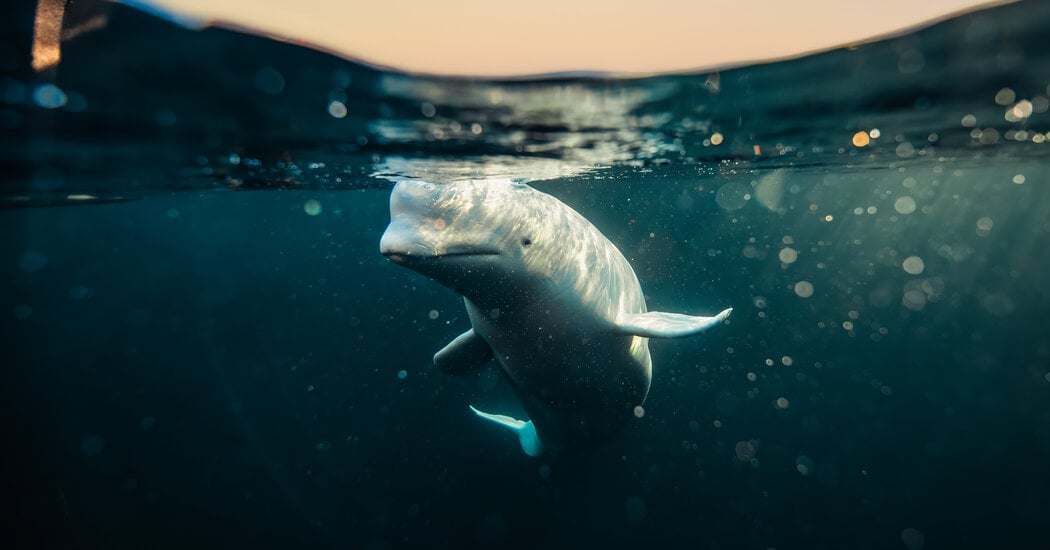On April 26, 2019, a beluga whale appeared near Tufjord, a village in northern Norway, immediately alarming fishermen in the area. Belugas in that part of the world typically inhabit the remote Arctic and are rarely spotted as far south as the Norwegian mainland. Although they occasionally travel solo, they tend to live and move in groups. This particular whale was entirely alone and unusually comfortable around humans, trailing boats and opening his mouth as though expecting to be fed. And he seemed to be tangled in rope.
…
All the while, marine experts had been speculating about the whale’s origin. Clearly this animal had spent time in captivity — but where? The first major clues came from the harness: One of its plastic buckles was embossed with the words “Equipment St. Petersburg.” And it appeared to have a camera mount, hinting at reconnaissance of some kind. The beluga also knew how to closely follow boats and had a habit of wrapping rope around propellers, which could suggest specialized training. As several experts told media outlets at the time, the whale had most likely escaped from the nearby Russian Navy. Based on a poll of more than 25,000 respondents, the Norwegian Broadcasting Corporation christened the beluga Hvaldimir, a portmanteau of hval, the Norwegian word for whale, and the Russian name Vladimir.



It’s the same sad story every time we encounter such mammal.